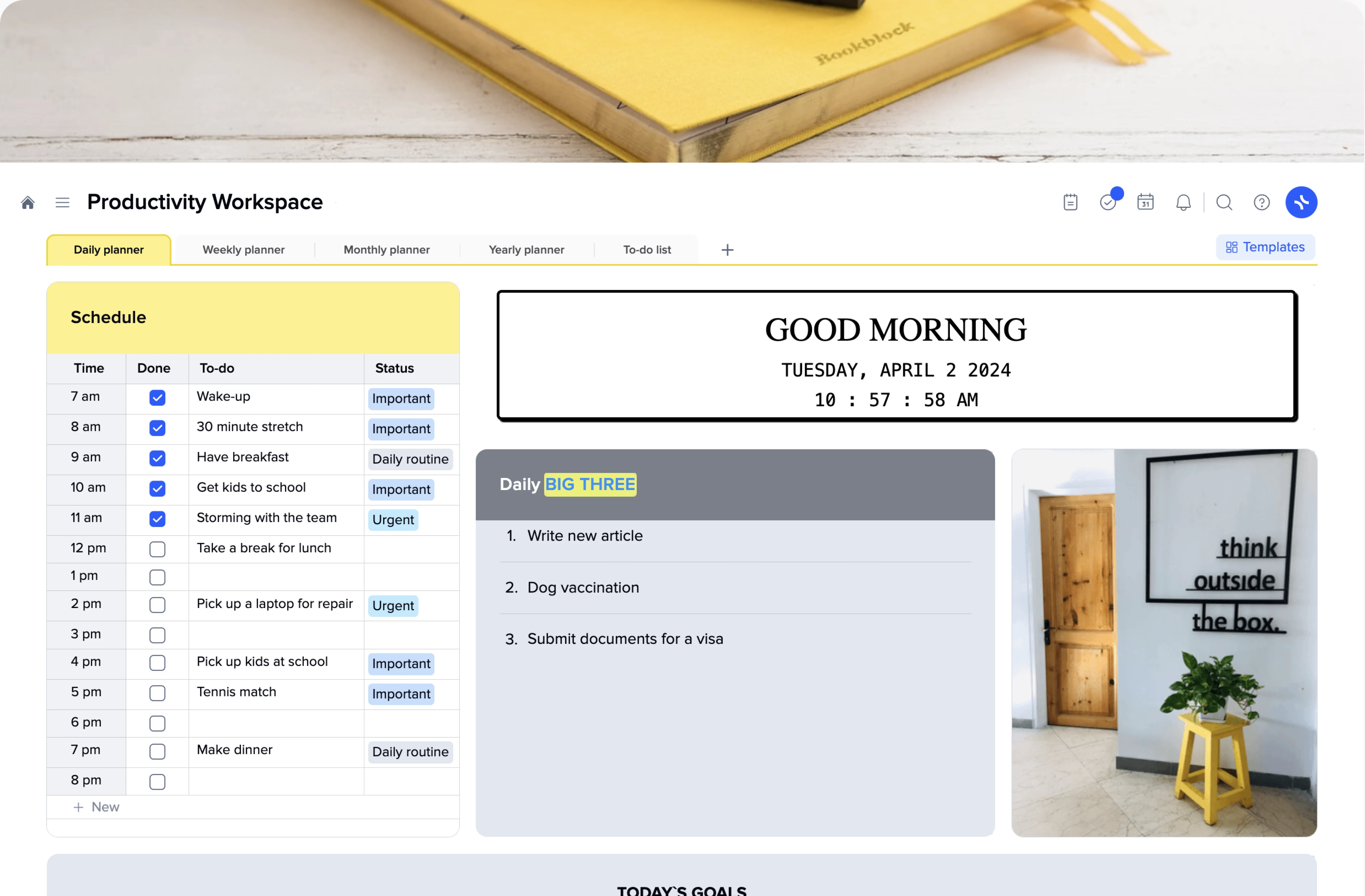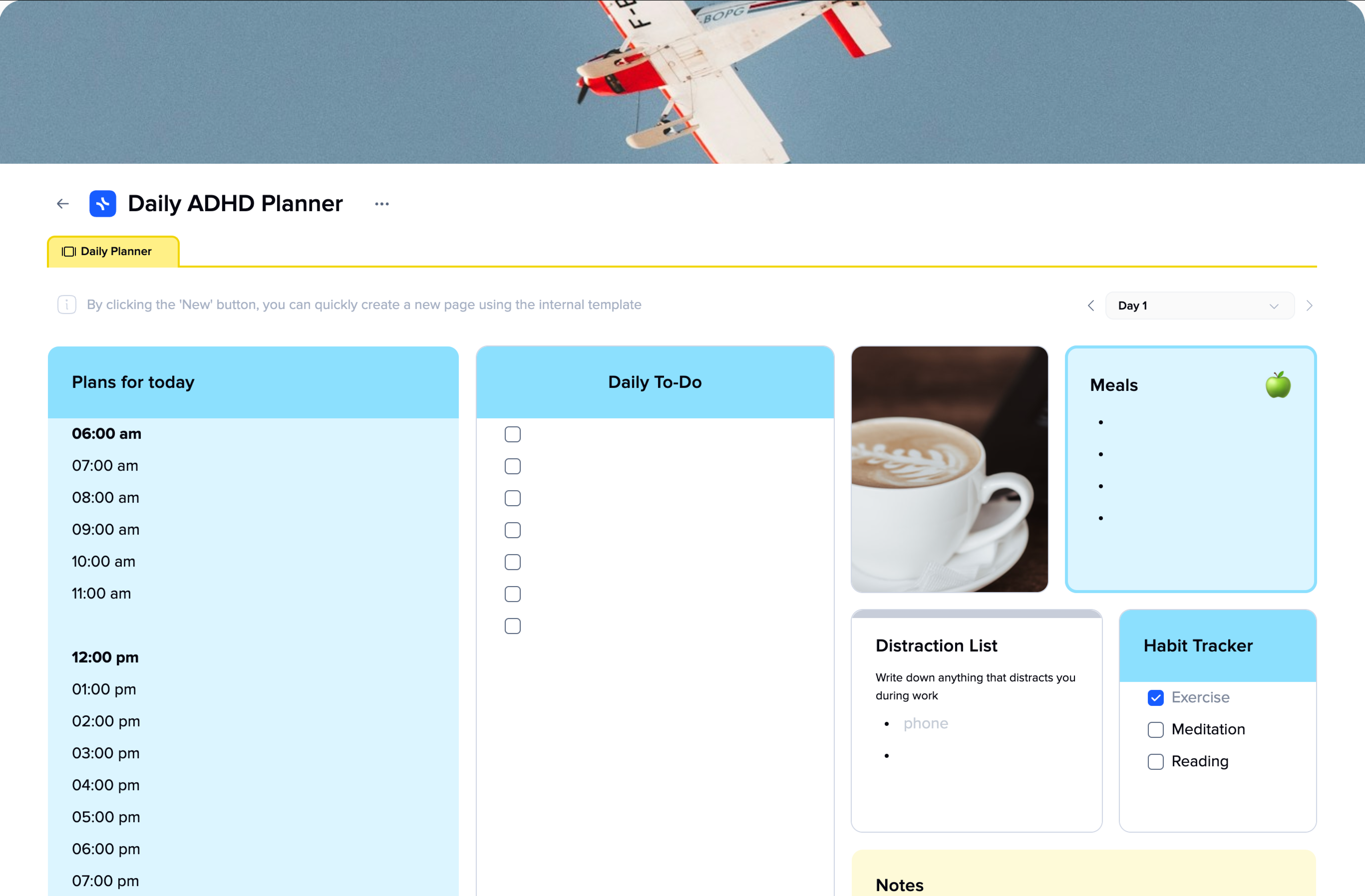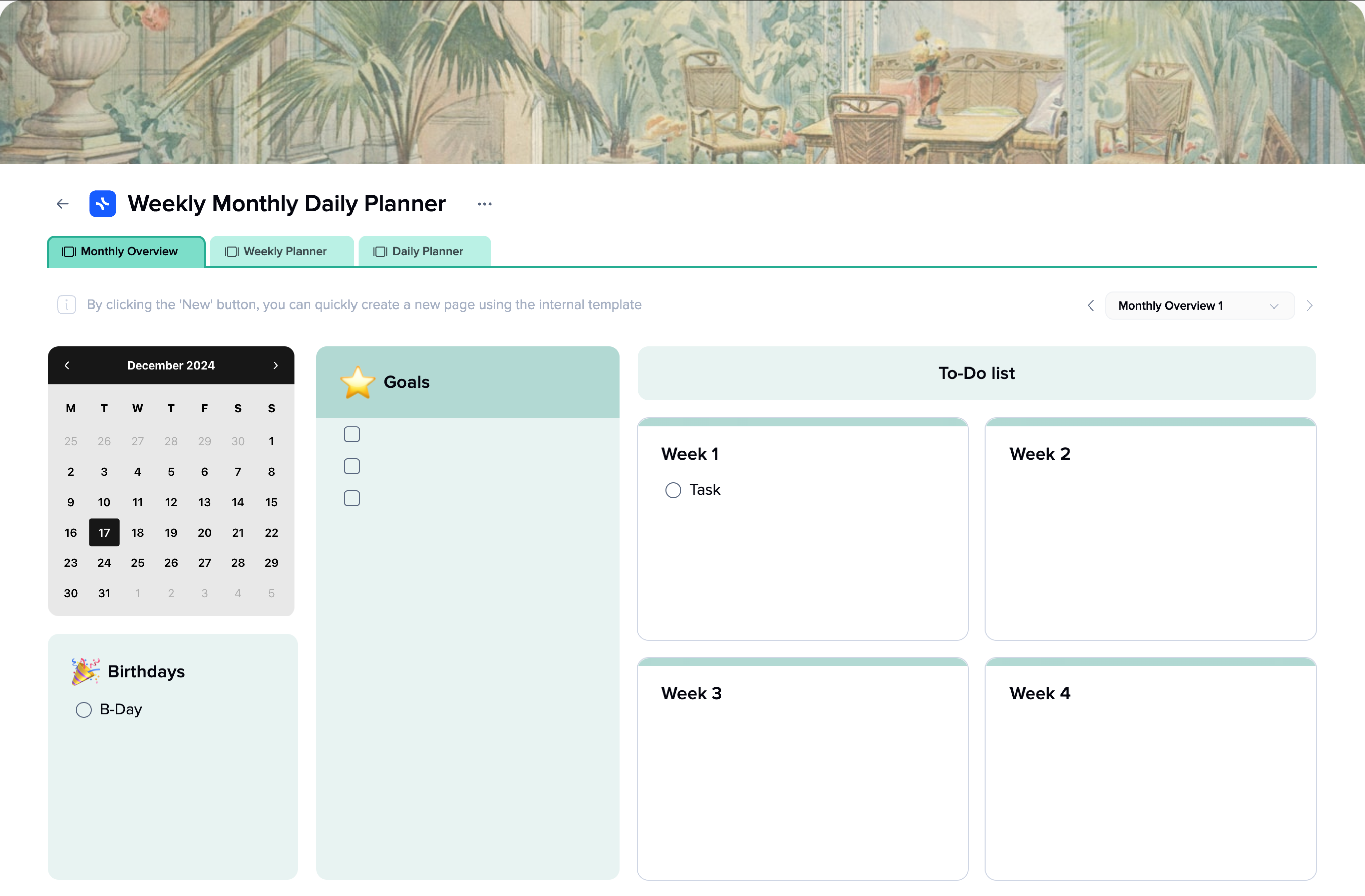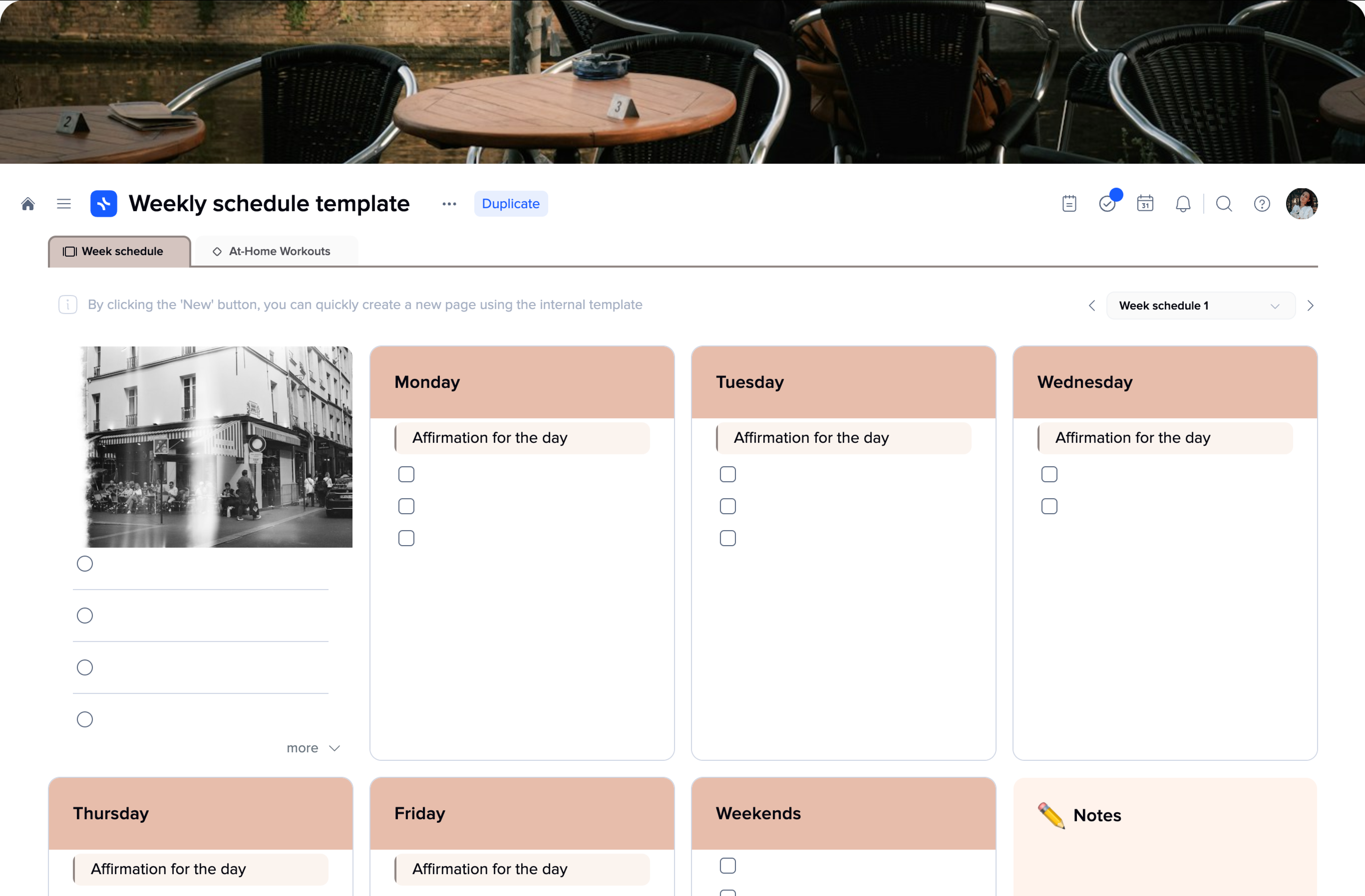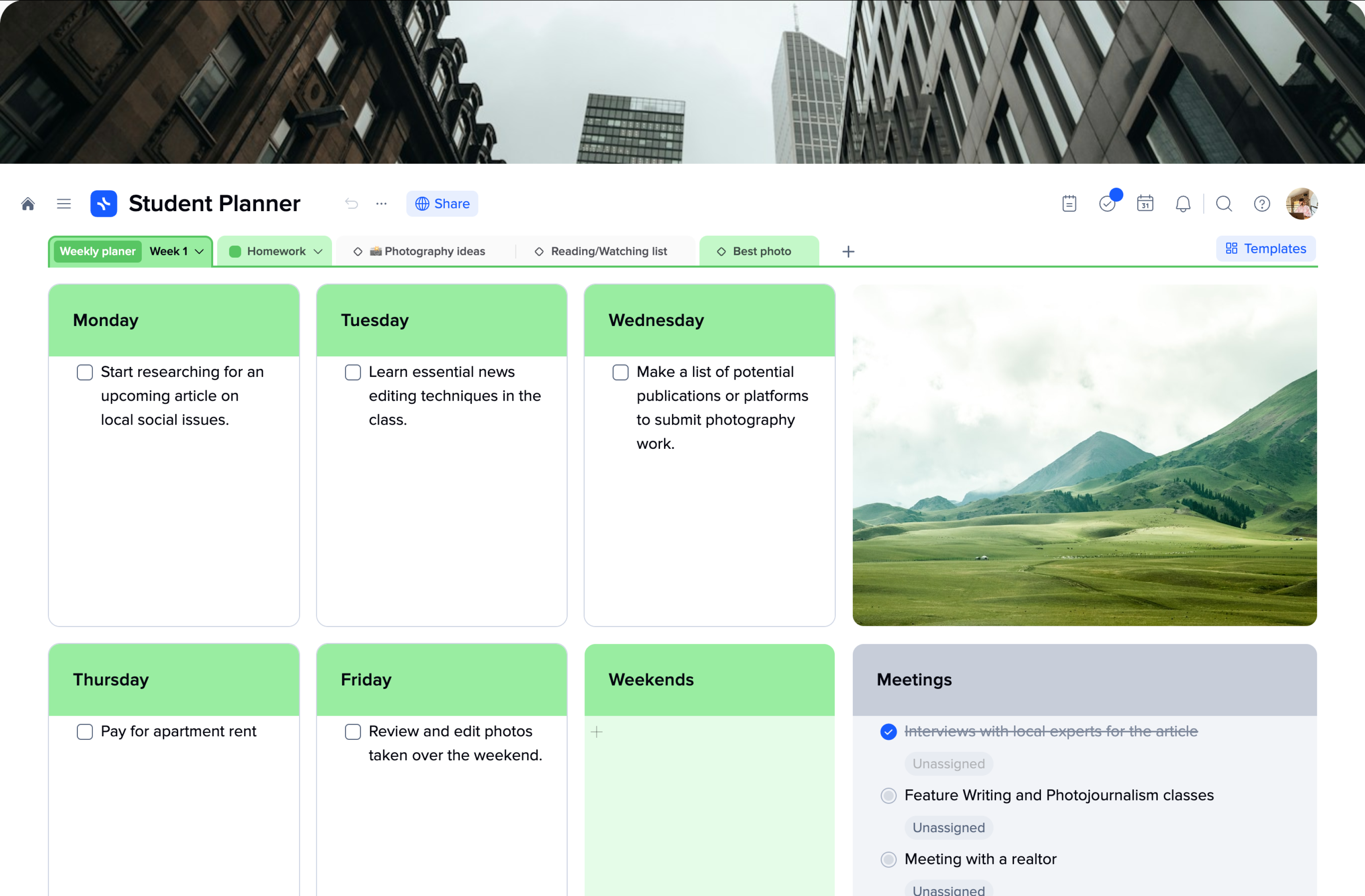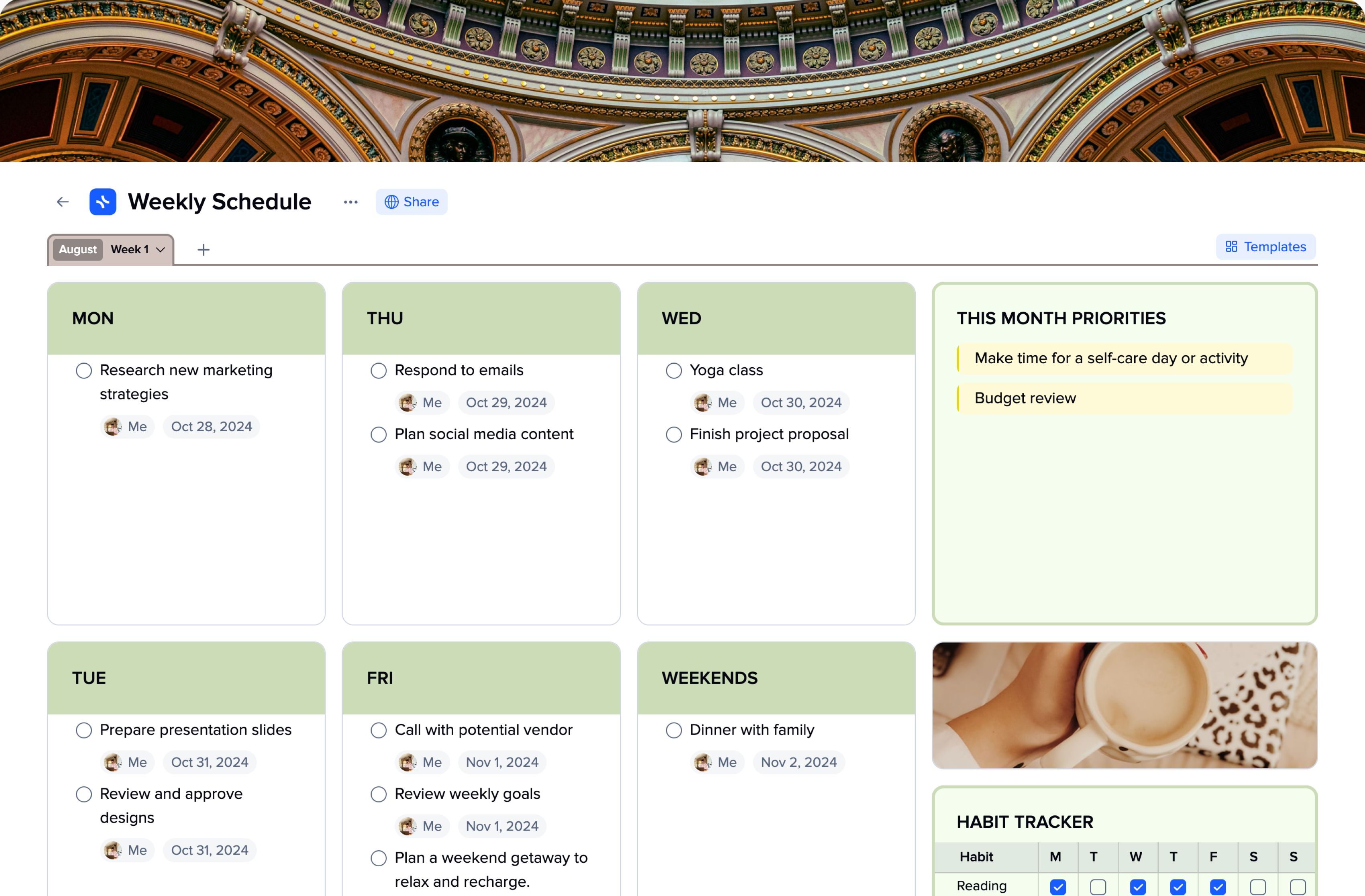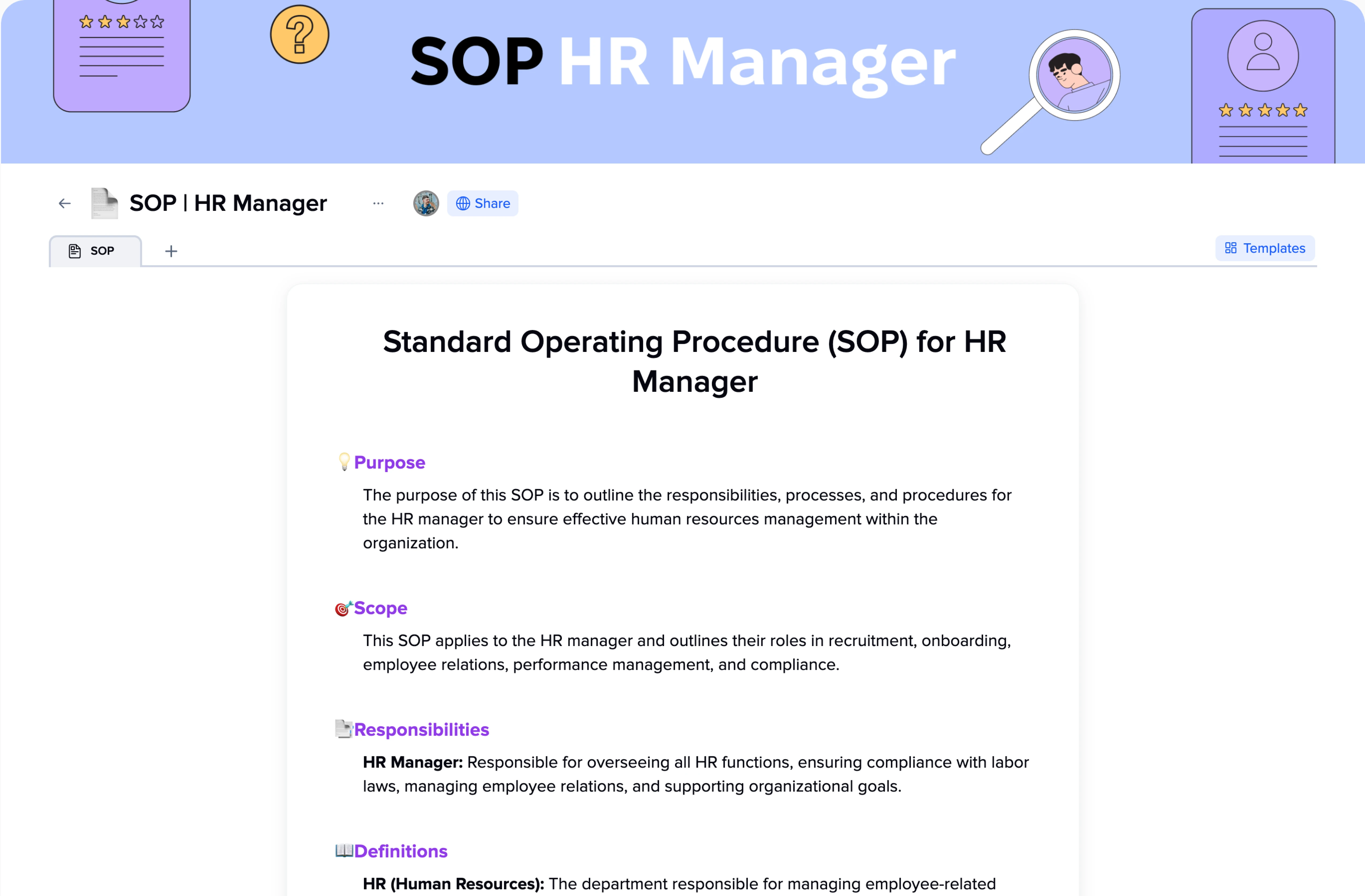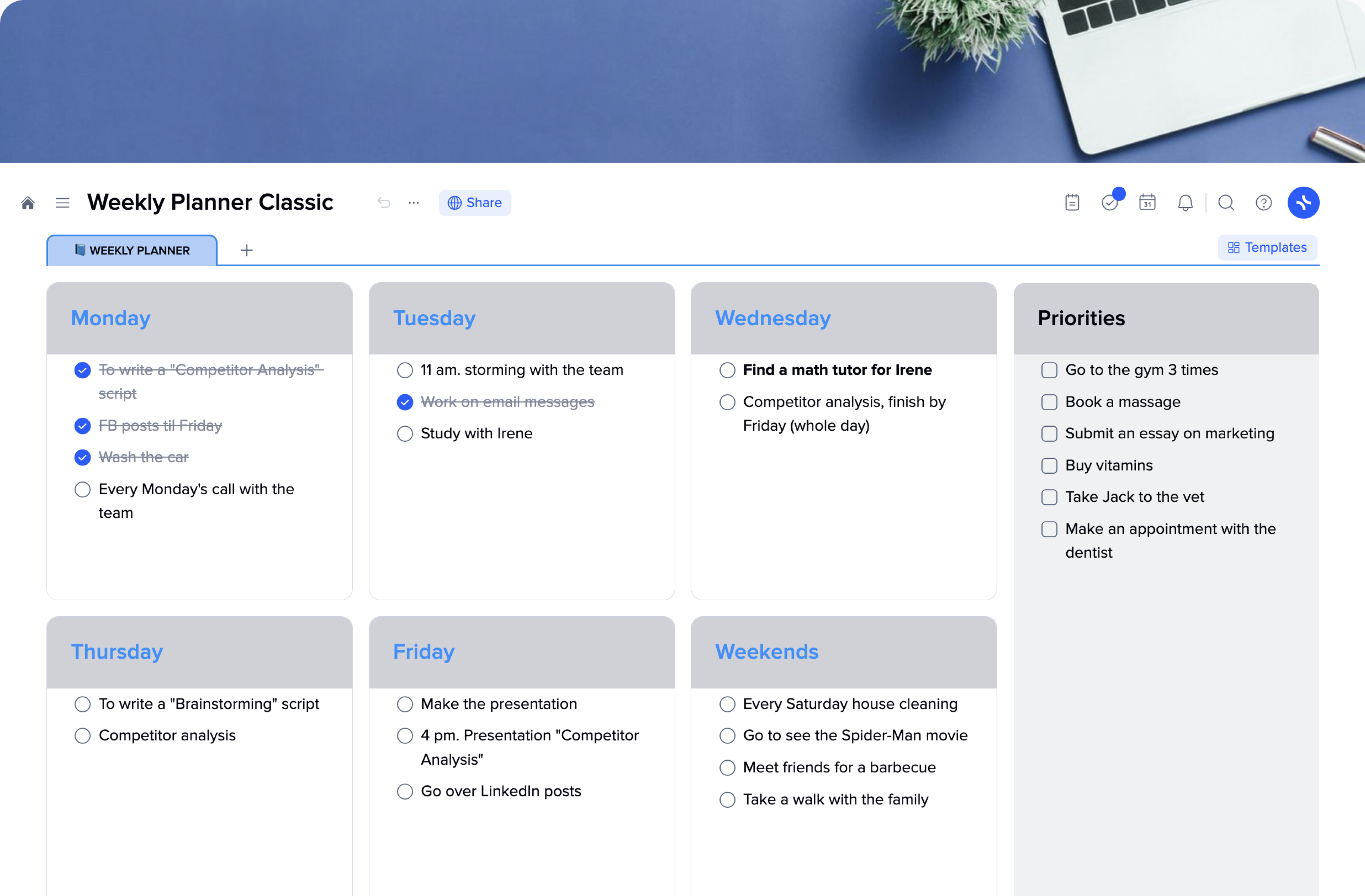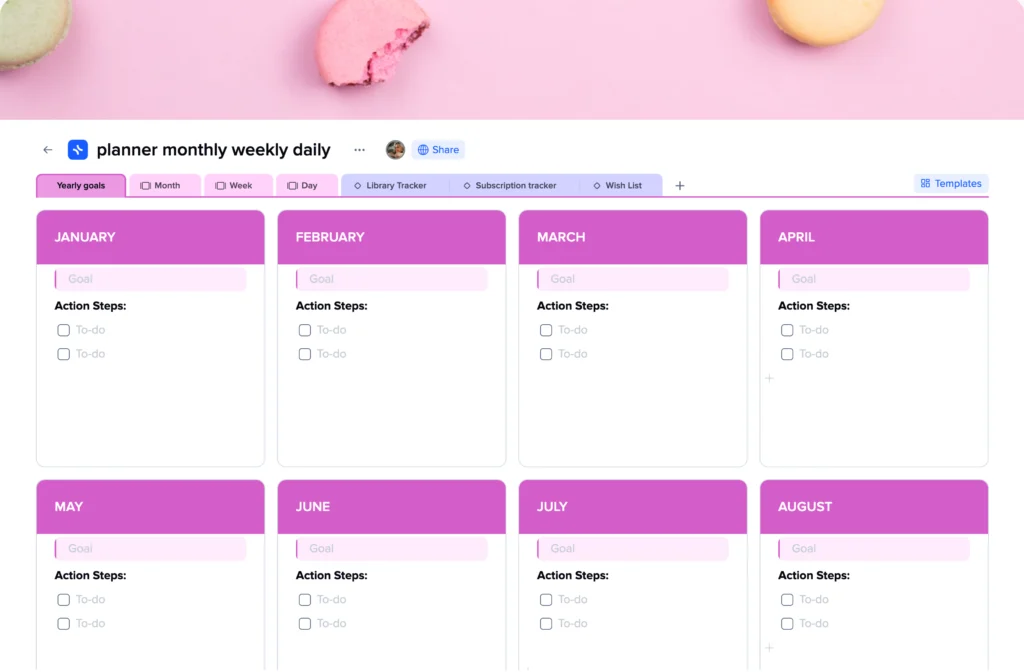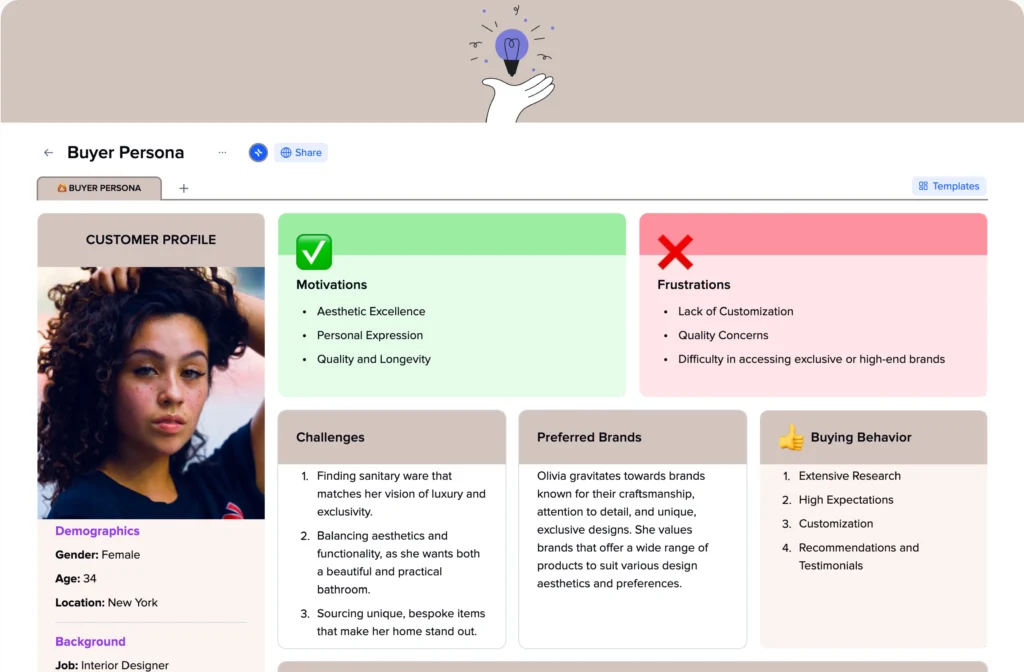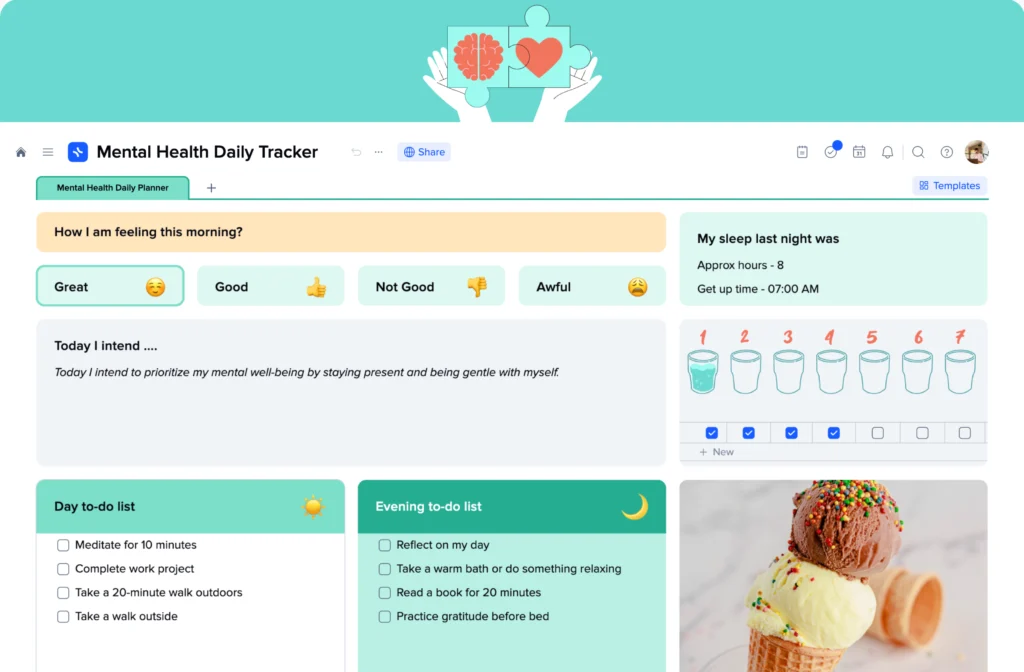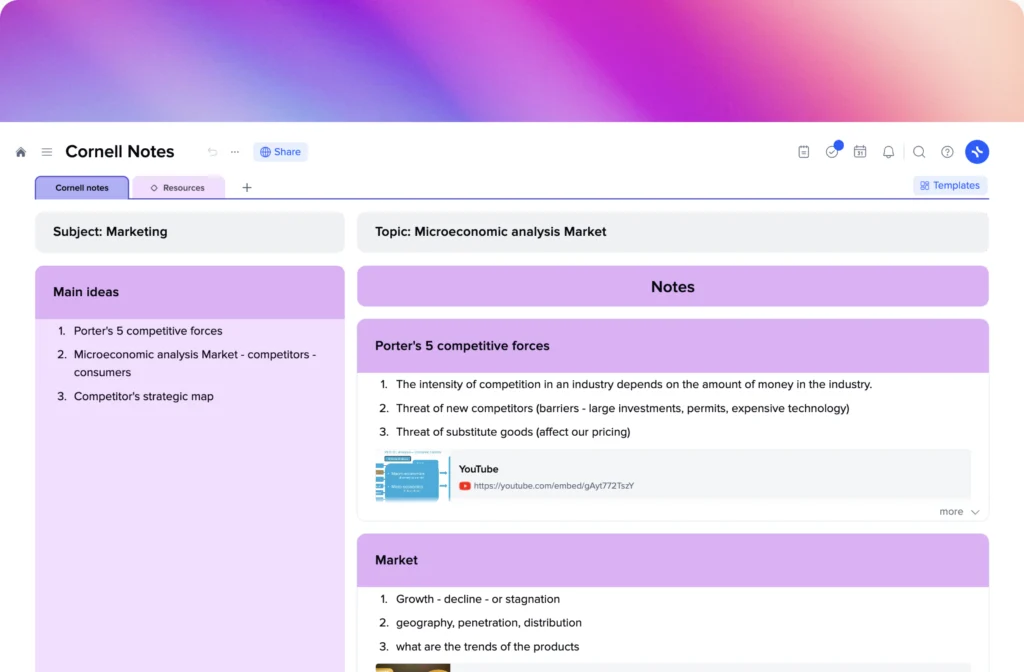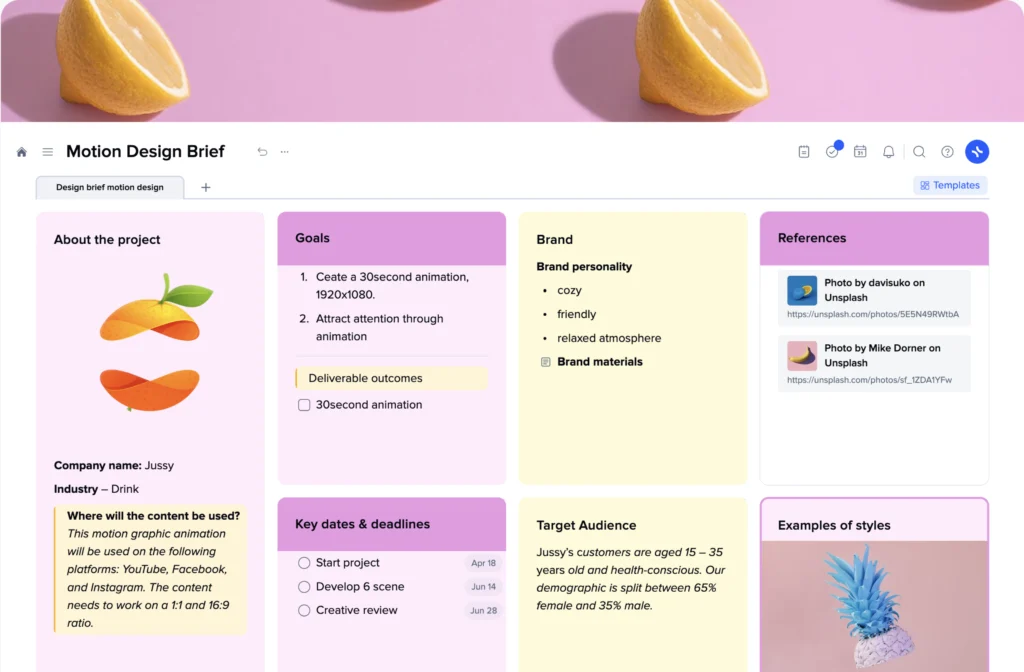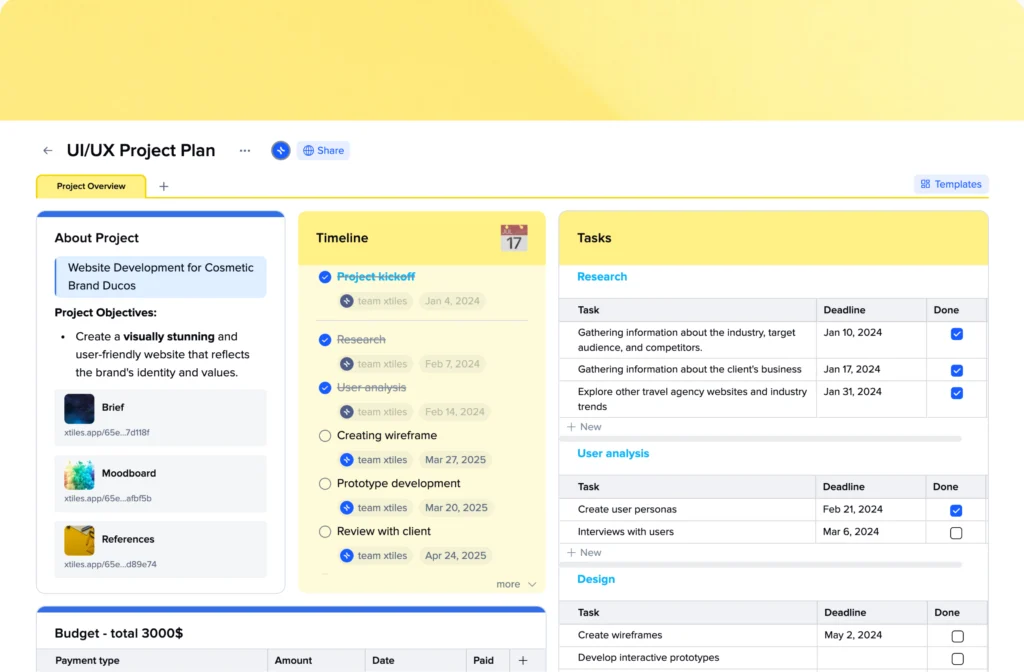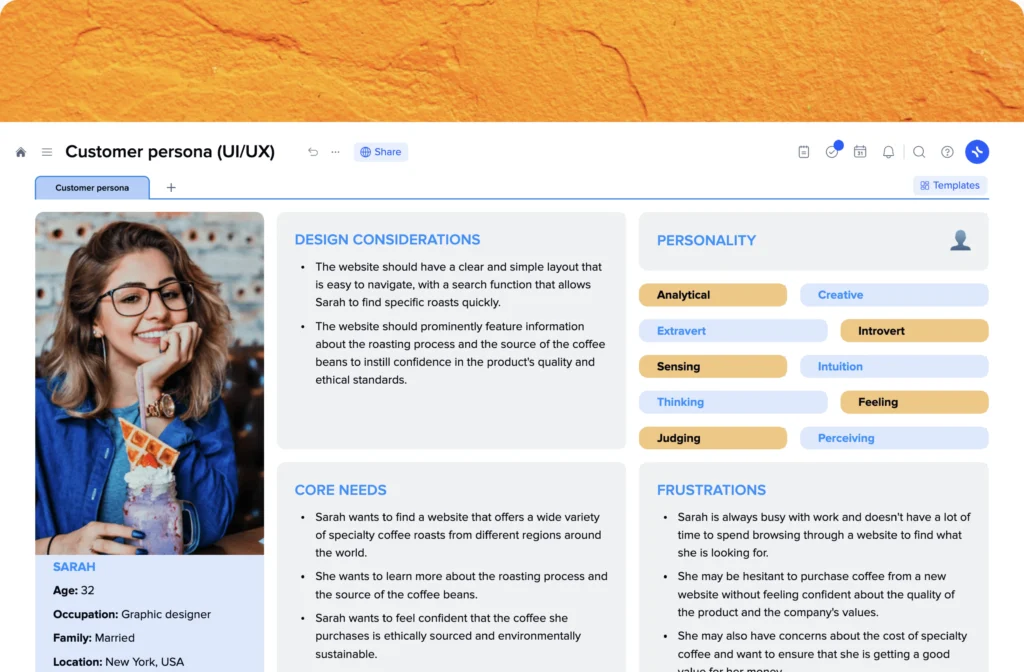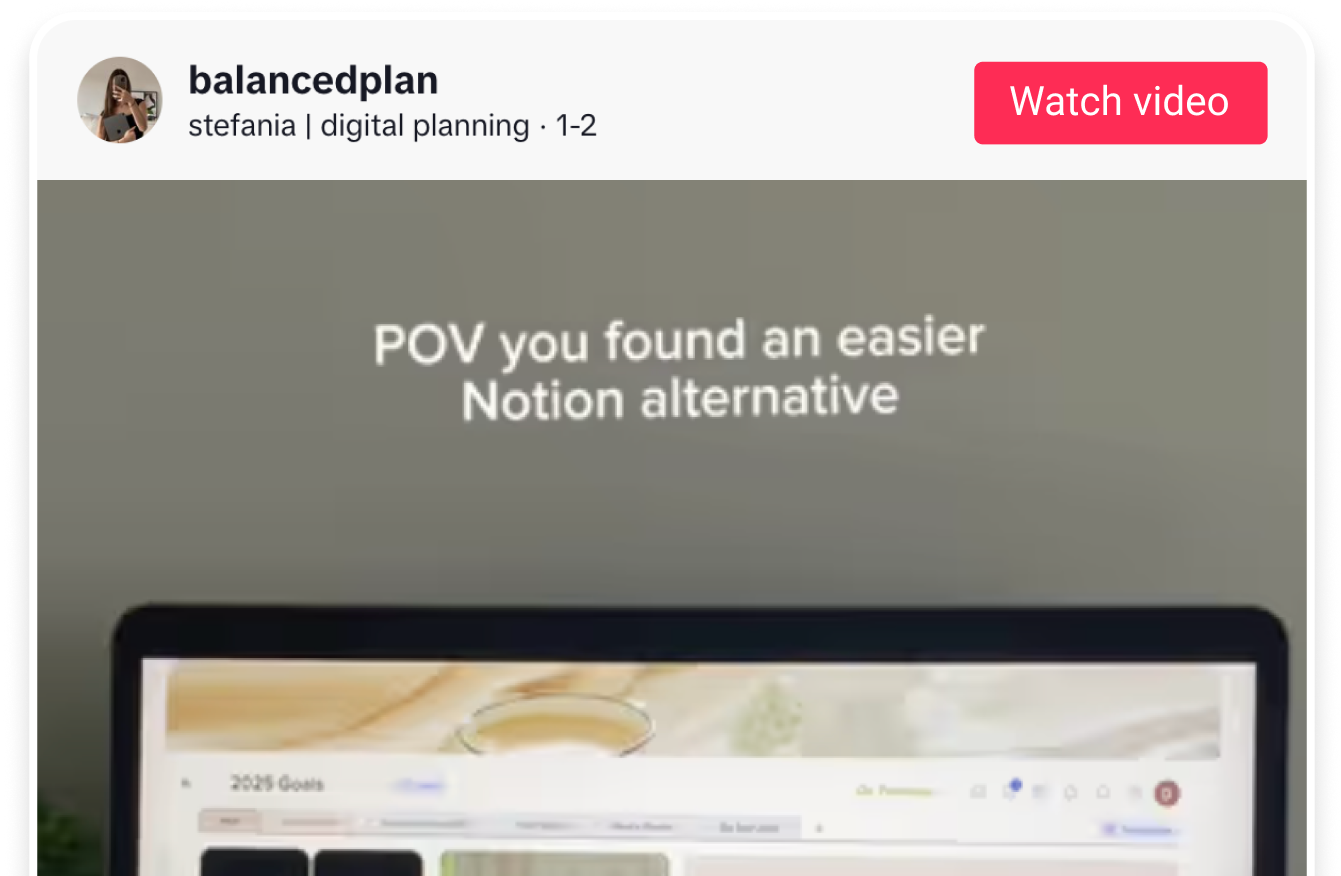How to create a productivity plan using the xTiles Productivity Plan Template?
Now that we discussed the benefits of productivity planning let’s dive into the process of creating a plan that will work for you. We already told you that if you have basic planning skills and have gone somewhere further than creating a shopping list, you will manage this task quite easily.
- List all your tasks and obligations:
Begin by creating an action list of all your tasks and obligations. Being the all. It’s not yet time to separate important tasks from time-wasters. It’s very important to write them down because relying solely on memory is rather an untrustworthy approach that usually leads to forgetting things or feeling overwhelmed.
- Identify obstacles and challenges:
Now that you have them all together, you can take a closer look at each task and identify potential obstacles or challenges you might encounter on your way. When we acknowledge these challenges in advance, we can develop strategies to overcome them at all or possible solutions once we are there.
- Track your time:
Making a productivity plan may take some time. The more time you can invest in learning your current habits and routine and how you spend your time, the better you will understand yourself and your natural inclinations. However, avoid the temptation to spend weeks and months on your research because that’s the opposite of productivity, and we don’t need that.
Track your time for at least a week and keep a record of essential tasks you complete each day, including both work and personal activities. You may also track time-wasting activities like social media usage.
Then, review the information you got. Examine how much time you spend on each task and how it’s distributed throughout the day.
- Develop a strategy:
Based on your productivity patterns and preferences, develop a strategy to enhance your productivity. There are various methods and techniques you can employ, such as focusing on one task at a time, utilizing time management techniques, or using project management tools.
- Experiment and revise:
Give yourself time and be patient, as finding the perfect strategy may require trial and error. Experiment until you discover a method that maximizes your efficiency.

